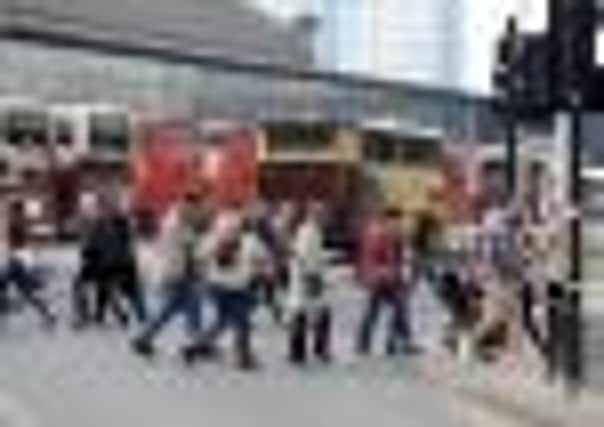Police warning for thousands dicing with death at blackspot


A survey found that in just one hour, 750 adults crossed the road between St Stephens shopping centre and the transport interchange in Ferensway while the “red man” was showing to indicate it was not safe to cross and vehicles had right of way.
Two people have been killed and nine have been seriously injured within 200 metres of the crossing in the past three years.
Advertisement
Hide AdAdvertisement
Hide AdPc Keith Ward, road casualty reduction officer for Hull, went to observe pedestrian behaviour at the junction and said he was shocked by what he saw.
“I was in police uniform and thought I might have to hide but people were crossing towards me. I said ‘You’ve just crossed on a red man, why?’ and the answer was ‘I’m in a hurry’. All you can say is what kind of example do you think you are setting to children?”
Although jaywalking is not an offence, police are nonetheless working with the city council and other road safety partners to try to make more people observe the warning lights.
Pc Ward said: “A lot of it is about education and making people aware of the danger, and that is based on casualty statistics.
Advertisement
Hide AdAdvertisement
Hide Ad“If you commit yourself and you can’t make it you find yourself stranded in no man’s land and we have seen people stuck in the middle.”
The warning comes as latest figures show significant falls in the number of road casualties across the city.
Figures compiled the council show a 52 per cent reduction in the number of people killed or seriously injured between the 1994-1998 average and 2010 – four per cent better than the UK average.
The total number of casualties in Hull fell by 35 per cent, again better than the national average, which fell by 32 per cent.
Advertisement
Hide AdAdvertisement
Hide AdThe figures are even better in areas with traffic-calming measures.
The first 20mph zone was created in January 1995 and Hull now has more than 150 – more than in any comparable city in the country.
An in-depth study of the 32 most recent traffic-calming schemes reveals dramatic drops in the number of casualties.
These figures, which compare three-year periods either side of the schemes being introduced, show a 51 per cent fall (from 572 to 283) in the total number of people being hurt in accidents.
Advertisement
Hide AdAdvertisement
Hide AdThe number of children being injured fell 74 per cent, the number of all pedestrians being hurt by 61 per cent, the number of people killed or seriously injured by 60 per cent, and the number of cyclists injured by 38 per cent.
The partners are determined to drive these figures down even further and have set challenging provisional targets for the next 10 years. The aim is to cut the numbers killed or seriously injured by 33 per cent, the number of casualties aged up to 18 by 50 per cent, and the number of pedestrians and cyclists hurt by the same figure.
Pc Ward said: “The key is not to get complacent and being geared to seeing the reductions continue. It’s about working with partners, education, enforcement and engineering.”
Coun Martin Mancey, portfolio holder for environment, transport and emergency planning, added: “I am pleased at the significant reductions in casualties, which are attributable to our successful campaigns both at educating drivers to, for example, wear seatbelts, watch out for motorbikes and pedestrians, and cycling proficiency for children, as well as our very successful traffic calming and other physical road safety improvements.
“However, one casualty is one too many so we will be continuing our efforts to further reduce them.”